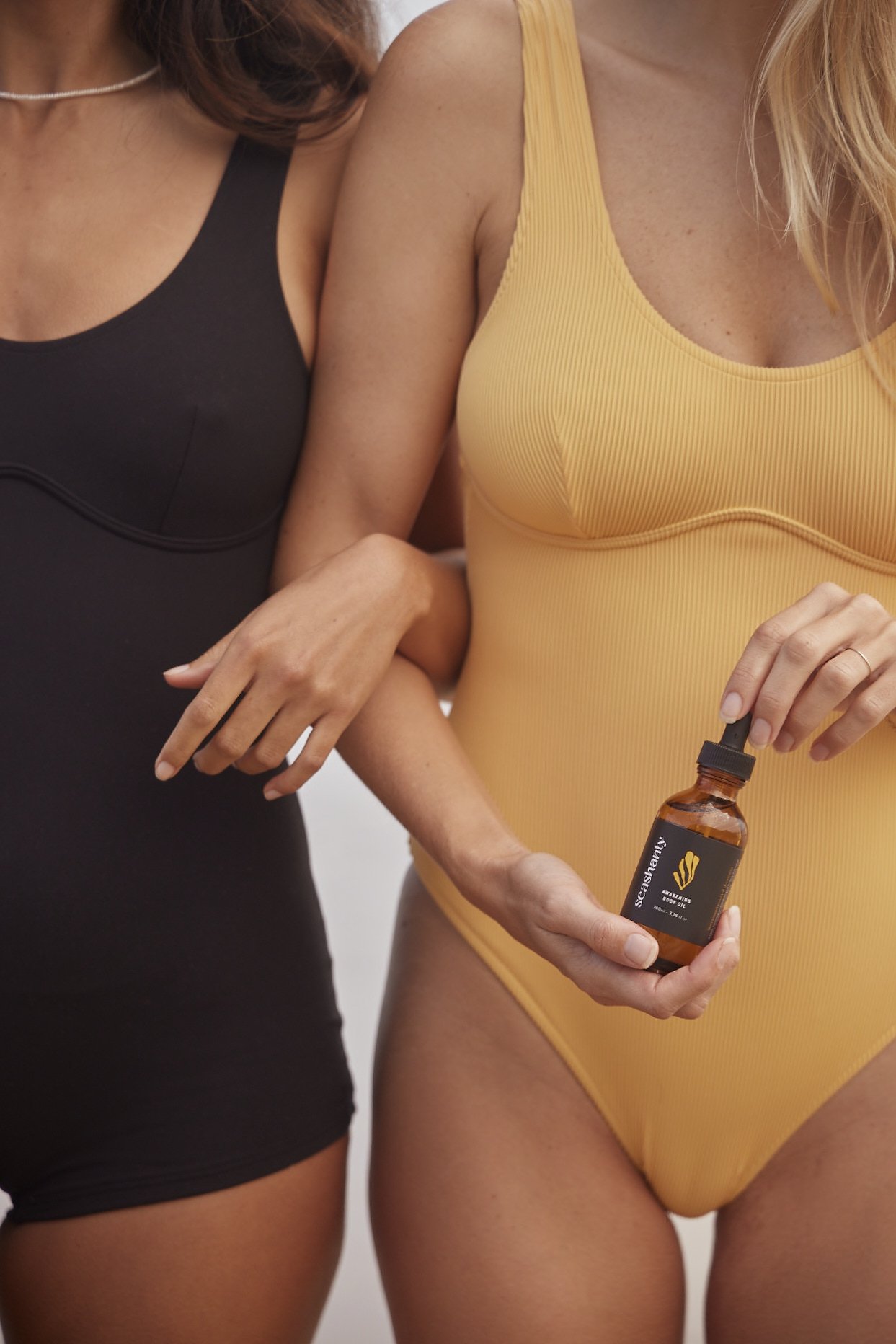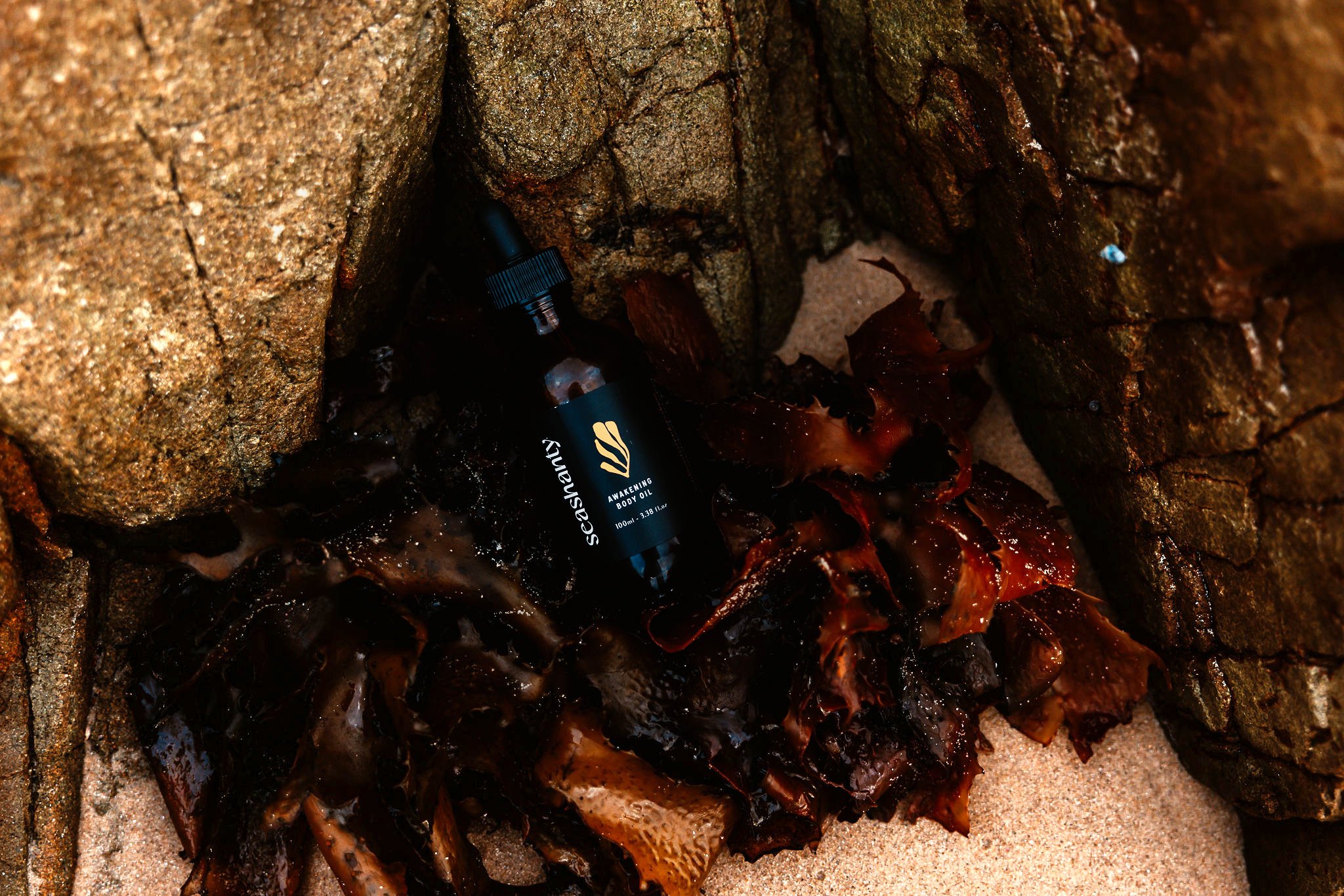Seaweed: The Future of Skincare
An interview with Gosia, of Seashanty.
Words: Anna Hutchroft
Tell us about Seashanty and how it came into the world. Who are the brains behind the brand?
Seashanty came about through a group of friends who connected over some findings in natural beauty – particularly, discoveries in skincare derived from seaweed. John Lamont, our scientist and co-founder, has more than 30 years of experience working with the world's leading beauty brands but has always leaned towards supporting local producers and growers that are reciprocal with the land (or in our case, sea).
Kim and John Beach work in the nutrition and health space and Olly & Gosh (Barnes/Gasiorowski) run a design agency in the Northern Rivers. The impact of bio-active seaweed extracts on our skin is truly amazing, but the earthly benefits of seaweed is what we saw as a real game-changer. As a sequester of carbon from our environment, seaweed takes five times the rate of carbon than any land-based plant. It needs no pesticides, grows at the rate of knots and forms beautiful marine environments along our gorgeous shores. And, it’s fully renewable!
We hope that by offering a product that boosts seaweed growth and production we can make one small change in our lifestyle that will benefit the user and the planet.
What were some of the passions that sparked this project?
We have always aspired to look for changes or improvements in our daily rituals that can better help the world around us and ourselves. From breath work to upcycling, we know that small changes can have positive impacts on the places we love and call home.
Seashanty offers us all a chance to look after our planet and skin. Nourishing it after salty days at the beach and in turn, helping nurture the world the way we would our own garden. We love that thought!
How do you think the skincare industry can improve when it comes to sustainability and environmental consciousness? How do you hope Seashanty impacts the future of our life on this planet?
There are many ways that the skincare world can improve — as a new company we are at the start of our journey when it comes to packaging, reusables, and production. Our products are produced with ingredients that are sourced as locally as possible – up the eastern seaboard from Tasmania to the Northern Rivers. This is to reduce unnecessary transport and support local industries – it’s driven by the same sentiment that motivates us to shop at the local farmers’ market. Our lab runs on solar energy and has a state-of-the-art water waste management system to allow us to operate with as small a footprint as possible. In the future we hope to see roles for mushroom packaging (currently in trial stages), refillable products and further supporting the seaweed farming industry so that we will see more beneficial changes– not just in skincare, but in gut health, foods, and medicine.
Do you have any role models in the environmental space?
We have come across some great folks since our Seashanty journey began. We are inspired by seaweed farmer Bren Smith. His book Eat Like a Fish is a ten out of ten. Also, what Sam Elsom is currently creating with Sea Forest. Pia Windburg, who we work with to procure our farmed seaweeds, is an amazing marine ecologist who has helped
shape the industry. She’s providing insights and advancements in how seaweed can help cancer treatments and gut health — her insight and knowledge have helped us form what we believe to be the best going skincare we could offer our loved ones.
What are your hopes for Seashanty?
As a company, we hope that by supporting the production of seaweed we help to nurture marine environments and reduce carbon emissions. Our dream would be to one day own our own seaweed farm that helps to regenerate an area of our coast, providing the algae and kelp we need for not only the production of Seashanty, but to create a healthy marine environment … a big dream!
What are the benefits of seaweed to human health?
Seaweed has a profound effect on antioxidant protection, collagen production and skin barrier quality. These qualities form the basis of our skincare rituals. They’re magnified by coastal ingredients such as Kakadu Plum, Aloe Vera, Macadamia Oil, which offer a highly nourishing skincare range that suits a variety of skin types.
A recent study showed that high purity, certified organic seaweeds, at low inclusion rates, improved skin wrinkles in 45 percent of subjects, were effective at reducing wrinkle visibility in 100 percent of subjects, and reduced reddening by up to 45 percent relative to the control group studied.
An expert clinician determined a 60 percent overall improvement in skin appearance, while 80 percent of study participants self-reported a visual improvement in skin firmness, tightness, and elasticity. And this is just skincare-based knowledge! Many of the findings come from scientists who have been looking at how seaweed can help produce new skin cells and be used to help us through chemotherapy as well as having amazing effects on our gut and digestive health.
As it grows, kelp absorbs carbon dioxide and nitrogen compounds – cleaning the atmosphere and cooling ocean temperatures. Kelp has been referred to as the tree of the sea – is this comparison accurate? Between trees and kelp, which one is able to capture more carbon?
Both trees and kelp are great for our planet. We believe that seaweed and kelp are a powerhouse for the climate, sending carbon to the seafloor and deacidifying oceans. Kelp is essentially the ocean's equivalent of trees. Kelp absorbs carbon dioxide and nitrogen compounds, helping clean the atmosphere while capturing up to 20 times more carbon per acre than land forests. Forty-eight million square kilometres of the world's oceans are suitable for seaweed cultivation – an area of about six times the size of Australia. Globally, seaweeds are thought to sequester nearly 200 million tonnes of CO2 every year – as much as New York State's annual emissions. When algae dies, much of the carbon locked up in its tissues is transported to deep oceans. As well as taking carbon out of the atmosphere, seaweeds also help rehabilitate their immediate environment by lowering the acidity levels around them. Kelp forests are not just good carbon sinks, they help restore coastal ecosystems allowing other organisms to thrive!
What is one small action that we could take today that would make a difference to living a more sustainable Life?
Have a swim and think about that question for ourselves. We are all smart, we just need the space to breathe, be ourselves and take action into our own hands wherever possible!





